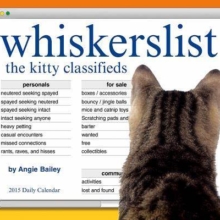A comprehensive introduction into the Roon music cataloguing and streaming program
The Roon system for cataloging and playing music seems to be difficult to understand the concept to many Others, including me, who consider it to be the best streaming software around. Let s see if I can shine some light on it.
Roon is a music player for Windows.
Apple and Linux, Computers, differ from other solutions in several fields, though, which we will discuss throughout this video.
Let s start with the simplest of setups a stand-alone setup and end up with a big multi-room, multi-user system with a central server and a different quality of audio in every room, varying from ghetto blaster level to the highest of high-end.
Roon has a super fast user interface and a metadata service and presentation that equals success.
The vinyl album cover experience, But let s start at the beginning, with the simplest setup on a laptop that contains your music and is connected to your stereo using the headphone output.
It could, of course, also be a desktop, but let s settle for the laptop right now.
We immediately come across the first point where it differs from other programs.
It has a relatively high system demand for an audio player.
The processor needs to be an Intel Core, i3 Ivy Bridge, or better, Which means the laptop should have been produced in mid-2013 or later. Then it needs 4 gigabytes of RAM, an SSD boot drive, and a screen resolution of 1440 by 900.
It might run Windows 7 or later Mac, OS 10, 8, or recent x86 Linux 64-bit versions.
The laptop also needs to be connected to the web over wifi or a network cable.
Let s be honest.
These are relatively steep specs for a music player, but not really for a modern laptop.
What you now need to do is go to Roonlabs com register and download the correct version for your hardware.
If you want to do a test run with Roon, try the promo code below here, You can also find it in the show notes.
If still valid, you will be granted a two-month trial period.
Otherwise, you could test-drive Roon for 2 weeks.
You could also subscribe right away When producing this video prices were 119 euros, annually or 499 euros for a Lifetime membership. The membership allows you to use the Roon Core.
The part that does the indexing and metadata on one computer, but you can playback over unlimited, endpoints or rooms.
If you would prefer that name.
I’ll get back to this.
Then you install the software, enter the provided user name and access code and follow the instructions on the screen.
You will be asked where your music is.
If you use iTunes, you could use the iTunes information and what audio output you want to use.
That, for now, is the sound card on your laptop.
The Roon user interface will show up and Roon will start indexing your music map, If you use iTunes or any other music program, don t fear it won t be usable anymore.
Roon just makes its index of your music on the SSD and will not make any changes to the music folder. So you could use iTunes or, for instance, JRiver Foobar, MusicBee, Audirvana, Amarra, or any other program along with Roon, Even at the same time as long as you don t want to use the same sound card for both programs simultaneously Roon also contacts the RoonLabs server over The internet to check for, updates and check your user account.
It then starts searching if more information on the albums and musicians is available.
It does that at an easy pace in the background, so you can keep using your computer and internet connection for other things too.
It also means that the first time it can take up to some days before Roon is ready.
Indexing and updating the metadata Roon presents itself with the user interface on the screen of the laptop.
It is the most intuitive interface I know, although this of course is personal, See the review of Roon for more details.
The link is in the show notes If the laptop is close to the stereo and not close to your listening position.
You might use a smartphone or tablet to control Roon on the laptop Android version.
4, 4, and iOS version 8, 0, or later are required.
Windows Tablets like the Surface 3 and Surface 3 Pro are also supported. The Roon Knowledge Base has more specific info.
You can use as many tablets and smartphones as you like, for controlling the laptop and depending on the hardware.
You might even be able to control the volume or use the smart device for playback itself.
If you have a compatible device for playback elsewhere in the house, you could also control that from the laptop or smart device, For instance, a Sonos speaker, Airplay, speaker, Squeezebox, or Roon Ready device elsewhere in the house can be sent music to from your laptop, Depending on The playback device this can be in the original resolution, but if necessary, high res files will be downsampled automatically Or in plain English.
You don t have to bother with anything Just point out where you want the music to be played and it will, Regardless.
You might get an idea of how versatile this is by looking at what I have connected to my Roon system.
Several Apple Airplay compatible devices, including an Elac Discovery, offer three outputs: an iMac running Roon remote control software, and a Raspberry Pi running Kodi, which I don t use for music.
By the way, a Sonos Connect, the RoonReady SOtM sMS 200 Ultra, grouped with the RaspTouch, A Yamaha active speaker and a Yamaha streamer, and two Raspberry Pi s running RoPieee RoonBridge software.
Each of these can be sent a unique music stream or be combined if they use the same streaming technique.
So all Airplay devices can be grouped, all Sonos devices can be grouped and all RoonReady devices can be grouped, But you can t group an Airplay device with a Sonos device and so on, But let’s step one step back Up till now we presumed you would use A laptop, But what, if you own a desktop computer Or if your significant other does t like the laptop lying around in the living? Well, you now know you could place the laptop in the study or even in the attic. As long as there is a network connection, It can feed the audio over the network to compatible Endpoints.
As mentioned earlier.
You might also use a desktop computer instead of a laptop to run the Roon Core.
Perhaps now is the right time to talk about the individual parts.
The Roon software is made of.
Let s take my automatic espresso machine as a metaphor: it is made up of a water reservoir, a boiler, a coffee, a grinder, a pressure group, and a waste basket for the used coffee grounds.
All these parts are in one place, the espresso machine, But some people use a separate grinder and then manually, put the right amount of ground into the portafilter mount it in the holder of the espresso machine, and pull a lever to manually generate pressure that forces The water, through the coffee ground, Then the coffee is ready and only the portafilter needs to be emptied in a waste bin.
In other words, a fully automatic espresso machine contains all the parts needed, while the manual machine has several functions divided over several appliances.
Now, with an espresso machine, this is easily understood, since there are all kinds of easily identifiable functions to be seen With software and Roon software in particular.
Its functions can also be in different places and that might to some be less easily identifiable. As I said before, it is the core that indexes the music, completes the metadata, and sends the music bits to whatever is defined as the audio output, as instructed by the user interface A license.
Allow you to use only one installation of the Roon Core at one time Now, if you have a holiday house in the south of France, and you want to have a second music computer there, you can use the same license.
But when you do, the Roon Core at home is temporarily disengaged In our example of the laptop.
Not only the core was running on it, but also the user interface and the audio interfacing, or the Control app and Outputs in the Roon lingo.
But if you prefer to control Roon from an app on a smart device like a tablet, you could have downloaded the Core.
Only installation program called Roon Server to only install the core software on the laptop On a laptop that does t make sense.
But if you have a computer that will never be used for music reproduction, but can run the Roon Core it might.
And if you’re like me, you could use the tiny Intel, NUC computer and run the special version of the Roon core named ROON Rock on it.
I made a three-part video on how to set it up.
The link is in the show notes. Whatever you choose, the result will be the same.
Only the number of streams that can be processed and sent might vary depending on the computer used, But that s only relevant for people that want to simultaneously use many streams.
My 6th Gen i3 NUC can handle at least 15 streams.
Then I ran out of endpoints.
It is the Roon Core that needs all the processing power and fast SSD drive, and only for fast searches and selections.
Ultrafast data provision to the Control app conversion when needed for endpoints that support only lower sampling rates and all kinds of DSP functionality that can optionally be used.
Reading the music bits from the storage device appears to be not critical at all.
A USB 2 drive will almost always be sufficient.
I use a USB3 drive connected to the Intel NUC computer.
The Roon Core is running on. An internal drive.

Obviously, will work too, But if you like, you can store the music on another computer and share that with the computer running the Core Or use a NAS.
Roon uses a very robust network approach, but keep in mind that a network connection can be disrupted by other users, for instance, when they start watching videos Using a hard disk directly attached to the computer running.
The Roon Core is the safest and cheapest option.
In the laptop example, the core, the control app, and the output software were automatically installed.
But if you install Roon on a second computer using the same Roon installation software, it will detect the Roon Core on the network and ask you if you want to install the control app only or have its core installed, which would need its own paid subscription.
Since it does t make sense to have a second Roon Core running you just install the control app and no extra subscription is needed.
If you choose this option, the audio output software also called bridge is installed too.
On this second computer, you can play music from the Roon core computer, but you can also connect to other rooms and send music there.
As said these rooms are called endpoints in Roon lingo, Every device that can play music sent to it by Roon is called an Endpoint To make things easier to understand, let’s divide the endpoints into three groups: computer, outputs, RoonReady, and others, The computer speakers or Audio equipment connected to the computer will automatically be available when the complete Roon installation, the Roon Core or the Roon Control app is installed. If you do want to use a computer as an endpoint, but it does t run the core and you need not control it from the computer.
You can install the Roon Bridge software.
The computer will then present itself to Roon as an Endpoint.
Only So the Roon Bridge software effectively makes that computer a Roon Ready device Roon Ready devices, use the Roon Advanced Audio Protocol which is far more advanced than what the competition uses.
It is very robust, contains metadata to be displayed on the endpoint, and has bidirectional control signals.
It is also unlimited as where the audio format, sampling rate, and depth are concerned.
If that s abracadabra, for you simply remember it currently, is the most advanced protocol that will play almost any file that contains music Even more important is that since RoonLabs doesn’t produce audio equipment, many brands support the Roon Protocol from the Bluesound streamers.
At about 500 euros a Brinkmann DAC costs almost 20 grand From the Raspberry Pi, with the appropriate free software for the dCS DACs, costing tens of thousands See the Roonlabs com site for a comprehensive list.
It is important to know that, given the computer, Roon Core is running on works as it is intended.
The sound quality is defined by the endpoint chosen and not the Roon software. Of course, cables.
Power supply and other audiophile tweaks can have their influence, but it is highly unlikely.
The Roon Core computer has any influence on the sound Unless it is directly connected to your stereo using analog or digital outputs or USB.
Then there can be large differences between computers due to imperfections in the clock signals on power lines.
Here it is the computer hardware again, not the Roon software.
That depends on the audio quality, But if you use the network to send audio to the endpoint, it will be that endpoint that defines the quality and not the computer.
The Core is running Again, provided it runs the Core software as intended.
It might be clear that an endpoint made of a Raspberry Pi with SPDIF board fed from the standard wall wart power supply, will not provide a clean digital signal.
Polluted and or distorted.
Digital signals are more difficult to convert to analog signals. I frequently get nasty remarks from people that think that, for instance, a SPDIF signal is a digital signal.
It s not.
It is an analog representation of a digital signal and distortion of that analog signal will change the timing of the bits on the receiving side In audio technology.
Repairing those timing errors appear to be far more difficult than basic electronics suggest Since there effectively is no time for repair.
If you want to know how digital signals can be distorted, see Connecting your DAC number 2, how digital can go wrong.
The link is in the show notes If you already have a digital-to-analog converter, to use with your current streamer or to improve your cd player.
You can use a so-called networked audio adaptor That can be a raspberry Pi running RoonBridge software or if you want better quality products like the Sonore, microRendu, or SOtM sMS 200 families of devices, You could also use a device that combines the digital to analog conversion.
With RoonBridge hard and software, A good example is the Bluesound line of streamers that can use their software, but can also function as Roon Endpoint.
The streamer only will set you back 549 euros.
The Auralic Aries Mini is only 499 euros and also works with their software or function as a Roon endpoint. They both have analog line outputs that can be connected directly to the CD or AUX input of your amp.
They also have digital outputs that can be connected to the SPDIF inputs of an amp with digital inputs or a digital-to-analog converter.
For more upmarket, you could go for products by Audio Alchemy, Audionet, Auralic, Ayre, Bel, canto, Brinkman Cocktail, Audio Elac, IQaudiO, Krell NAD Oppo, SOtM, PS, Audio, and many others.
Roonlabs wants to be the software for as many brands as possible.
Therefore, they have contacted and negotiated with many brands for RoonReady support in their devices For rapid acceptance.
They wanted to get as many brands as possible on board With Squeezebox.
This was impossible since it is in production no more, But luckily Logitech has kept the software open source so that RoonLabs could build their support.
Therefore, all Squeezeboxes work fine with Roon, as do Raspberry, and Pi computers, running Squeezebox, emulation software, Where the original Squeezebox was limited to 48 kHz sampling, newer models support up to 96 kHz, while an open source tweak is supposedly able to open it up for 192 kHz, The Emulators on Raspberry Pi: do it all without further trouble.
The big players in the low end of the market are Apple with Airplay and Sonos.
These brands were not interested in supporting Roon, so Roon developed their interfacing with the products of both brands. Apple s.
Airplay remains limited to 48 kHz, despite the rumor Apple would introduce higher sampling rates also Sonos remains limited to a maximum of 48 kHz sampling frequency.
If your stereo has some class, the low sampling rates might be a limiting factor.
If you own high res audio files or are subscribed to a streaming service that offers high-resolution audio Apart from the lower audio quality, the music will simply play since Roon knows the limits of the endpoints and converts the music on the fly to a lower sampling Rate That is also true for those RoonReady endpoints that support only lower sampling rates.
If you want to play DSD files on an endpoint again, Roon will automatically convert them to what that endpoint can handle.
The only thing to take into account is that converting from DSD to PCM, or vice versa, does take a fair amount of computing power and might limit the number of streams you can send out simultaneously.
So if you want to send tens of streams, keep that in the back of your mind and make sure the computer, the Roon Core is running on, is sufficiently powerful When Bluesound added RoonReady to all their players, including the series that already was discontinued at that time.
Some people thought that when they bought a Bluesound player, it would offer all the Roon functionality.
You now know that it needs the Roon Core installed on a computer plus a subscription.
The Bluesound player can only function as an endpoint in an existing Roon setup. But hey you got that functionality for free And if you want to upgrade, it is already able to work with Roon Th Elac Discovery is a different story altogether, for it does contain a light version of Roon called Roon Essentials.
So this is a small and silent computer running the Roon Essentials Core and it comes with a lifetime subscription lifetime, meaning the lifetime of the Elac Discovery If it dies or is passed on to another, the license also dies or is passed on with the Discovery to The new owner, The Discovery, also has three endpoints integrated, two separate analog stereo outputs and a separate digital output on RCA and TOSlink.
Since it is a light version of Roon, it does have some limitations.
It is limited to indexing a maximum of 30 000 tracks to send out a maximum of 8 programs.
Streams that do not support the Squeezebox have no separate composer screen and some other small differences.
That makes it less interesting for the streaming fanatic, But for the average music lover, it is a very affordable way of having most of the nice things of Roon, including a dedicated computer and player in a small housing for only 1100 euros.
You find links to the review and update review in the show notes, So there is some kind of program called a Roon Core that indexes the music collection, completes the metadata, and sends music to a local output and or to endpoints over the network.
This program is often combined with a user interface, where you can read the metadata and instruct the core to send music to one or more endpoints.
It needs to run on a computer and that computer can also be used as a control and endpoint.
But not necessarily, You could use your normal computer for it or run it on a dedicated computer. Like an Intel NUC, You always need a subscription costing 119 euros per year or 499 euros for a lifetime subscription unless you go for the slightly limited but very affordable.
One box solution called Elac Discovery comes with a lifetime subscription coupled with all the hardware you need, If you are only slightly interested use it.
The promo code in the show notes for a two-month trial unless you currently can t spare the money to buy or subscribe, For it is very hard to explain how different the user experience is.
It is also very hard to go back from Roon to other software, so be aware of that, if you consider doing a trial, For it is by far the best and most elaborate music cataloging playing, and distributing software on the market, and I don t see Any other brand taking over soon, But if that happens, I’ll be the first to report on it So subscribe to this channel or follow me on Twitter, Facebook or Google See the show notes for the links.
If you have a question post it below this video, but please don t, ask me for buying advice See my About Questions video to find out.
Why, If you liked this video, please consider supporting the channel through Patreon and see super exclusive videos too.
Just one dollar a month will do The link is in the show, notes, And don t forget to tell your friends on the web about this channel.
I am Hans Beekhuyzen.
Thank you for watching and see you in the next show, or on project com And whatever you do enjoy the music.
Your Kidney Disease Solution starter pack [INSIDE] ACT FAST – to improve your kidney health You can reverse kidney disease. But it’s going to take some work. Thankfully, world-class naturopath, Dr. Duncan Cappichiano has done all the work for you. He’s collected peer-reviewed medical journals. He’s sourced from top-level supplement companies. He’s learned from thousands of use cases. And he’s put it all into 1 easy-to-read digital resource: The Kidney Disease Solution. Since it’s digital you could wait forever to get it…. …but given the supply chain and economy lately, should you wait? While the entire roadmap to reversing kidney disease is in this resource… …you’ll still need to stock up on certain ingredients, supplements, teas, and more. This all takes time in today’s world. So grab your copy of the Kidney Disease Solution to learn what you need in your kitchen pantry ASAP for an all-natural boost to your kidney health. ➯➱ ➫ ➪➬ See what’s inside The Kidney Disease Solution ← https://twitter.com/leaman_ralph/status/1637920351324626947 яαℓρн ℓєαмαи















